Engage Young Minds: Create a Water Filtration System for Kids Aged 6-12
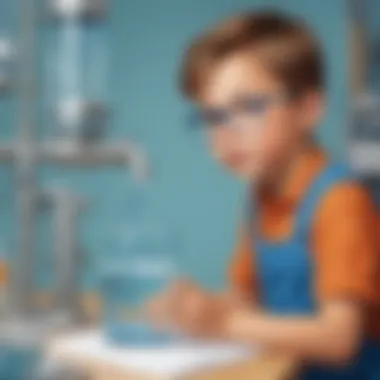
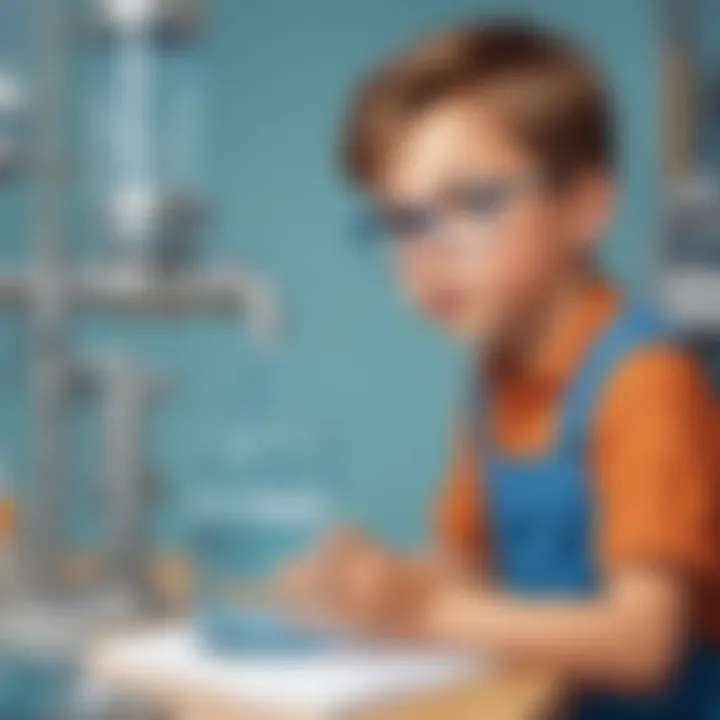
Science Fun Facts
Water is an incredible substance that covers about 71% of the Earth's surface. Did you know that less than 1% of this water is actually available for human use?
Discover the Wonders of Science
Exploring the process of filtration can be fascinating. Through this water filtration system project, kids will get hands-on experience with essential scientific principles like permeability and purification.
Science Quiz Time
Engage young minds with simple yet thought-provoking questions. For example, ask them why clean water is vital for both humans and the environment.
Science Experiment Showcase
Let's dive into building the water filtration system! Start by gathering materials like gravel, sand, activated charcoal, cups, and a funnel. Safety goggles and gloves are also essential to ensure a safe and enjoyable experiment.
Introduction
Water filtration is a pivotal process in ensuring access to safe and clean drinking water, a fundamental necessity for all. In this article, we delve into the intricacies of constructing a water filtration system tailored explicitly for young minds between the ages of 6-12. By engaging children in hands-on activities like building a filtration system, we not only educate them about the significance of clean water but also ignite a curiosity for scientific exploration and environmental stewardship.
Overview of the Project
Understanding the concept of water filtration
Exploring the concept of water filtration unveils the science behind purifying water for consumption. This segment focuses on elucidating to young learners how different materials can effectively remove impurities from water, transforming it into a potable form. Through this understanding, children grasp the scientific principles underpinning the filtration process, fostering a deeper appreciation for the essential role it plays in ensuring water safety.


Importance of clean water
Highlighting the significance of clean water underscores the critical need for access to uncontaminated water sources. By emphasizing the transformative impact of clean water on health and well-being, children begin to comprehend the value of this precious resource. An exploration of the importance of clean water sets the stage for insightful discussions on environmental conservation and sustainable practices, instilling a sense of responsibility in the younger generation towards the preservation of water quality.
Objective
Teaching children about water filtration
Empowering children with knowledge about water filtration equips them with a practical skill set while enhancing their scientific literacy. By immersing youngsters in the process of building a filtration system, we provide them with a tangible experience that bridges theoretical concepts with real-world application. This hands-on approach not only fosters an understanding of water purification methods but also cultivates a sense of agency in children to actively contribute to water quality enhancement.
Promoting scientific curiosity
Stimulating scientific curiosity in children lays the foundation for a lifelong passion for discovery and learning. By engaging young minds in the construction of a water filtration system, we spark an interest in environmental science and inspire inquisitiveness about the natural world. Encouraging children to question, experiment, and explore fosters a spirit of scientific inquiry that transcends the confines of the classroom, nurturing a generation of proactive and inquisitive learners.
Materials Needed
In the endeavor to equip children aged 6-12 with a practical understanding of water filtration systems, the materials needed play a crucial role. These components are essential building blocks for creating a fully functional and educational water filtration system tailored for young minds. The selection of materials was meticulously curated to ensure a balance between educational value, safety, and feasibility for children to engage in this hands-on project.
List of Materials
- Plastic Bottles: When it comes to plastic bottles, their versatility and accessibility make them an ideal choice for constructing the core structure of the water filtration system. The transparency of plastic bottles allows children to observe the filtration process in action, fostering a deeper understanding of water purification. Despite their lightweight nature, plastic bottles exhibit durability, making them suitable for repeated use in educational activities.
- Sand and Gravel: The inclusion of sand and gravel within the filtration system serves a fundamental purpose in trapping larger particles and sediments present in the water. These natural materials not only mimic the filtration processes utilized in larger-scale systems but also provide children with a tangible representation of how impurities are removed from water through physical filtration.
- Activated Charcoal: Among the materials included, activated charcoal stands out for its remarkable adsorption properties. By absorbing impurities such as chemicals and odors from the water, activated charcoal enhances the quality of the filtered water. This material introduces children to the concept of chemical filtration and underscores the multifaceted approaches employed in water treatment.
- Filter Paper: Filter paper acts as a fine barrier within the filtration system, capturing minute particles that escape the preliminary layers of filtration. Its porous structure and ability to sift out tiny impurities contribute significantly to the overall purification process. By incorporating filter paper, children gain insights into the importance of thorough filtration techniques in ensuring water cleanliness.
- Rubber Bands: The practicality of rubber bands in securing the layers of the filtration system cannot be understated. These simple yet crucial binding elements hold the various components together, maintaining the integrity of the structure during water filtration tests. Through hands-on application of rubber bands, children learn the importance of structural stability in engineering designs.
- Dirty Water Sample: The inclusion of a sample of dirty water serves as the practical medium for testing the efficiency of the constructed water filtration system. By introducing real-world contamination scenarios, children can observe firsthand the transformation of tainted water into a clearer and safer form. This hands-on experience enhances their comprehension of filtration principles and the significance of clean water sources.
- Scissors: Needless to say, scissors are indispensable tools in the assembly of the water filtration system. Their precise cutting mechanism allows for the customization of materials to fit specific dimensions, facilitating the construction process for children. With careful guidance, scissors empower young learners to take an active role in preparing the system, promoting autonomy and fine motor skills development.
Step-by-Step Guide
Building a water filtration system for kids is a fascinating project that introduces them to the essential concept of clean water and the technology behind water filtration. It aims to instill in them a sense of scientific curiosity and a deeper appreciation for environmental science. By engaging in this hands-on activity, children aged 6-12 can gain valuable knowledge about the importance of ensuring access to safe drinking water and the role filtration plays in achieving this.
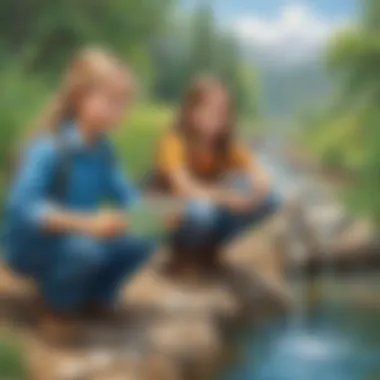

Preparing the Filtration System
Cutting the Plastic Bottle
Cutting the plastic bottle is a crucial step in creating the filtration system. This process involves carefully modifying the bottle to serve as the container for the filtration layers. By cutting the bottle with precision, children can understand the significance of structure and design in improving water quality. The malleability of plastic makes it an ideal material for crafting this essential component, allowing for easy manipulation and adaptation to various shapes.
Assembling the Filtration Layers
Assembling the filtration layers involves creating a series of distinct sections within the plastic bottle to facilitate the filtration process effectively. By layering sand and gravel, activated charcoal, and filter paper in a strategic manner, children can observe how each element contributes to filtering out impurities from the water. This hands-on experience not only teaches them about the different filtration mediums but also reinforces the concept of layering for optimal results.
Testing the Filtration System
Pouring Dirty Water Through the System
Testing the filtration system begins with pouring a sample of dirty water through the layers created in the plastic bottle. This action allows children to witness firsthand how the filtration materials work together to purify the water. By observing the gradual transformation of the water from murky to clear, kids can visually comprehend the efficacy of the filtration process and the importance of each filtration layer.
Observing the Filtration Process
As the dirty water passes through the filtration layers, children can keenly observe the filtration process in action. This hands-on observation enables them to identify the visible changes occurring within the system, such as the gradual removal of sediment and particles from the water. By witnessing the practical application of filtration principles, kids can better grasp the scientific concept of separating contaminants from clean water.
Discussing the Results
Identifying Filtered Water
After the filtration process is complete, children can identify the clean, filtered water collected at the bottom of the system. This moment allows them to connect the initial quality of the water with the effectiveness of the filtration layers. By recognizing the importance of achieving clear, drinkable water through their constructed system, kids can appreciate the significance of clean water for overall health and well-being.
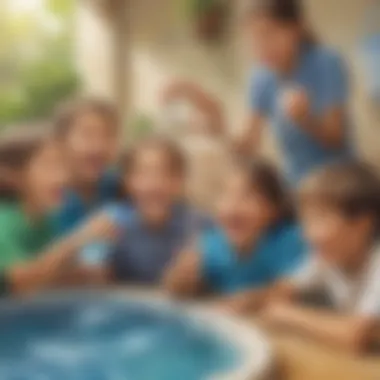
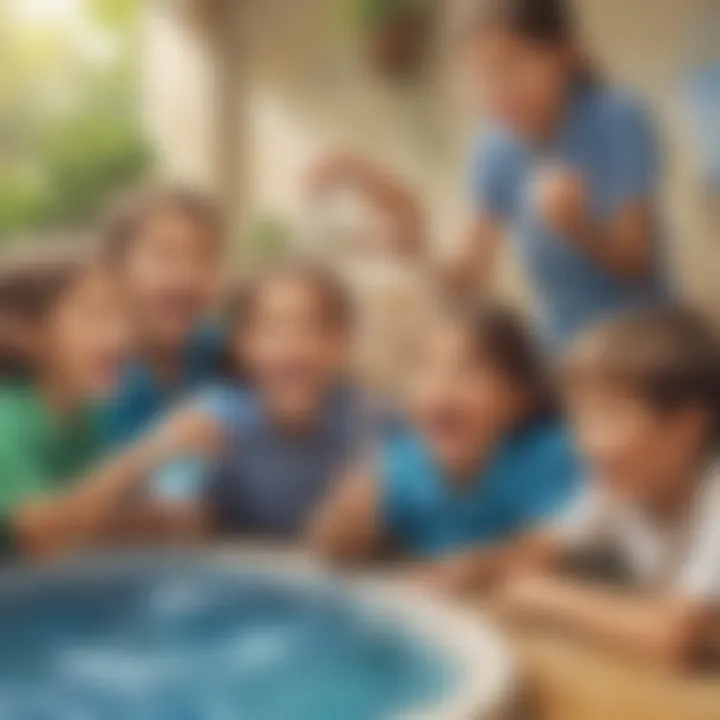
Understanding the Filtration Mechanism
By delving into the specifics of how each filtration layer functions within the system, children can deepen their understanding of the filtration mechanism. Understanding how sand and gravel trap larger particles, activated charcoal absorbs impurities, and filter paper refines the water texture provides insight into the intricate process of water purification. This knowledge equips children with a foundational understanding of filtration technology and its critical role in ensuring access to clean water.
Learning Outcomes
In this article, the focus is on instilling essential learning outcomes among children aged 6-12 through the construction of a water filtration system. By engaging in this hands-on project, children develop a deep understanding of filtration technology and its significance in ensuring access to clean water. The project serves as a practical demonstration of complex scientific concepts, fostering critical thinking skills from a young age. Moreover, the activity cultivates an appreciation for the importance of clean water and environmental stewardship, encouraging children to become responsible global citizens. Through this initiative, youngsters not only grasp the technical aspects of water filtration but also internalize the broader implications of water quality on human well-being and ecological balance.
Educational Benefits
Understanding of Filtration Technology
The section dedicated to understanding filtration technology plays a pivotal role in enriching children's scientific knowledge. It offers a comprehensive exploration of how various filtration materials function together to separate contaminants from water effectively. By grasping the mechanisms behind each filtration layer, children enhance their problem-solving skills and analytical thinking. Understanding filtration technology equips kids with the ability to apply scientific principles in real-world scenarios, promoting a hands-on approach to learning. This aspect not only demystifies the process of water purification but also empowers children to experiment with different filtration setups, fostering a spirit of inquiry and discovery.
Appreciation for Clean Water
The concept of appreciating clean water underlines the value of access to safe and potable water sources. It sensitizes children to the challenges associated with water contamination and scarcity, fostering empathy towards communities affected by water-related issues. By engaging in activities that emphasize the importance of clean water, kids develop a heightened sense of responsibility towards environmental conservation. Through hands-on experiences with water filtration, children not only gain practical skills but also cultivate a sense of gratitude for clean water resources. This educational benefit instills a lifelong awareness of the need to preserve and protect water quality, nurturing a generation of environmentally conscious individuals.
Conclusion
Creating a water filtration system for kids serves as a pivotal educational tool for instilling essential knowledge on clean water and fostering scientific curiosity in young minds. Through this hands-on project, children aged 6-12 can grasp the significance of having access to clean water and comprehend the workings of basic filtration technology. By engaging in this activity, kids not only learn the practical aspects of water filtration but also develop an appreciation for the environment and the importance of sustainable practices.
Final Thoughts
Impact of the Project on Children
The impact of this filtration project on children is profound as it cultivates a sense of responsibility towards conserving water resources. By actively participating in constructing and testing the filtration system using everyday materials, children gain a practical understanding of how water purification works. This hands-on experience creates a long-lasting impression, encouraging kids to become more mindful of their water usage and more appreciative of clean water's value.
Encouraging Further Exploration in Science
Stimulating further exploration in science through this water filtration project enables children to delve deeper into the realms of environmental science and experimentation. By inculcating a sense of curiosity and wonder, this activity motivates young learners to ask questions, conduct experiments, and seek answers independently. Encouraging children to explore beyond the basics of filtration fosters a spirit of scientific inquiry, nurturing critical thinking skills and a passion for discovery in budding scientists.







